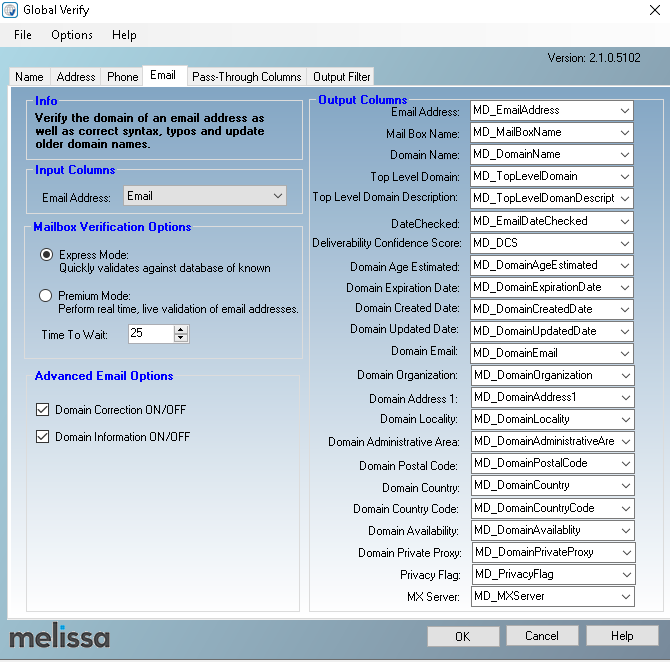SSIS:Global Verify:Email: Difference between revisions
Jump to navigation
Jump to search
No edit summary |
No edit summary |
||
| Line 1: | Line 1: | ||
{{SSISGlobalVerifyNav | |||
|GlobalVerifyCollapse= | |||
{ | }} | ||
{ | |||
| | |||
{{CustomTOC}} | {{CustomTOC}} | ||
Revision as of 20:51, 13 August 2015
← SSIS:Data Quality Components
| Global Verify Navigation | |||||||
|---|---|---|---|---|---|---|---|
| Overview | |||||||
| Tutorial | |||||||
| |||||||
| |||||||
|

Verify the domain of an email address as well as correct syntax, typos, and update older domain names.
Input Columns
- Email Address
- Select the field containing the input email address.
Output Columns
- Email Address
- The name for the email address output column.
- Mail Box Name
- The name for the mail box output column.
- Domain Name
- The name for the domain output column.
- Top Level Domain
- The name for the top level domain output column.
- Top Level Domain Description
- The name for the top level domain description output column.
Mailbox Verification Options
- Express
- Check the Email Address against the Web Service Email Reference Data.
- Premium
- Check the Email Address against the Web Service Email Reference Data. If the Email has not been verified within the last 3 days in the Web Service Reference Data, run the Email through real-time Email Verification.
Note: The 'Off' and 'Mixed' options have been deprecated.
Advanced Email Options
- Days Since Last Verified
Premium Mode Only
You can choose how fresh you want your data. By setting a higher value, you will receive faster responses but the data will not be as fresh. You can set this value from 3 to 365 days.